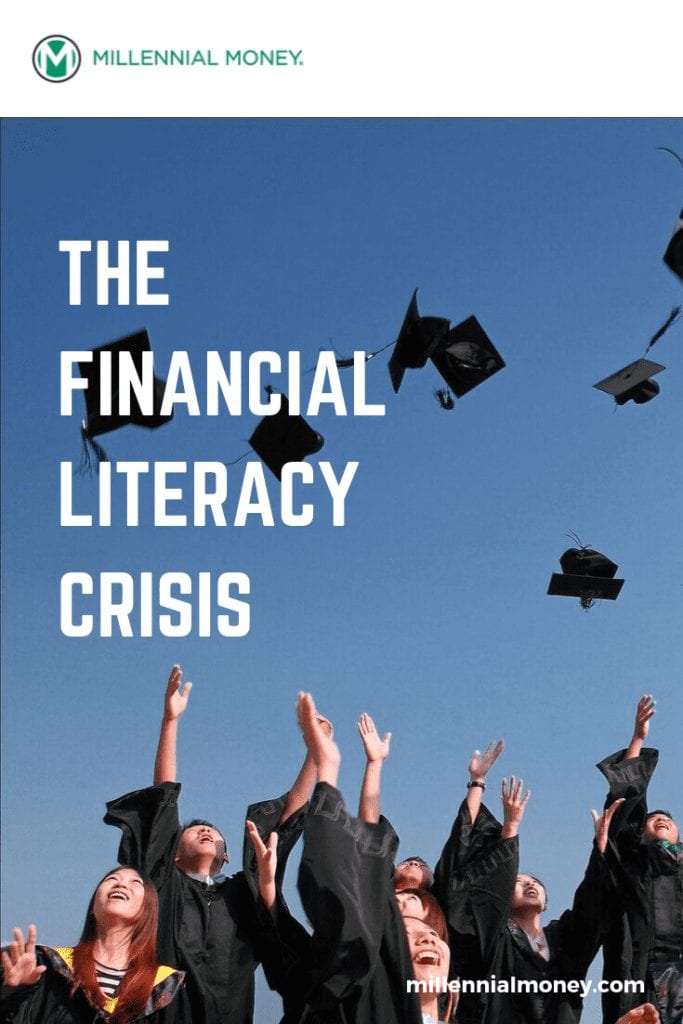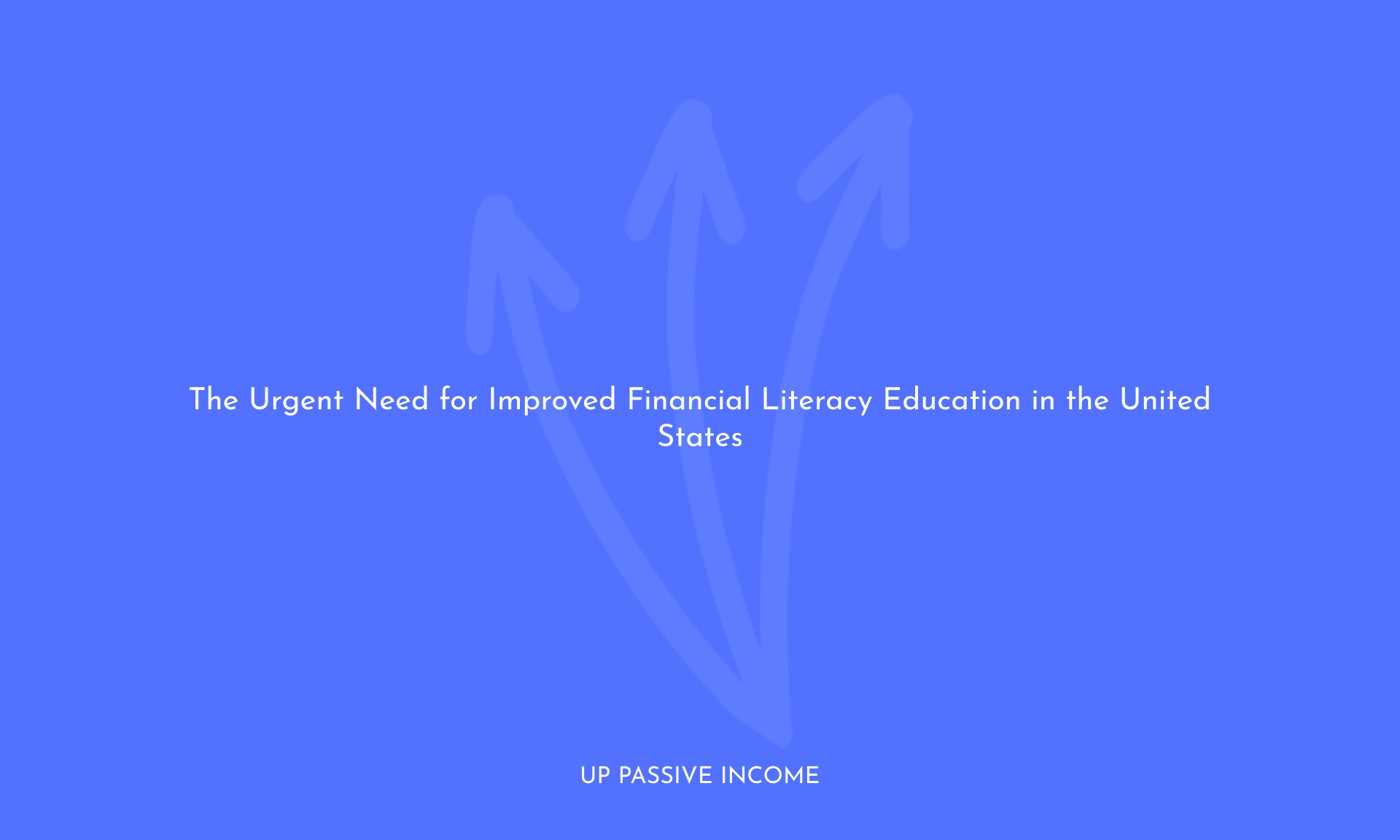Even though financial literacy is now mandatory in 17 states, most teachers are underprepared and the quality of the information is low.
Explore the concerning reality of the financial literacy crisis within the US education system. Despite the mandatory inclusion of financial literacy education in 17 states, a significant lack of teacher preparedness has resulted in the delivery of subpar information. This blog post delves into the implications of this crisis and highlights the critical importance of addressing and improving financial literacy for all individuals.
Table of Contents
Financial literacy is something everyone needs. Many of the decisions we make strongly depend on our understanding of money.
Financial literacy is a bit lacking in the US, however. Many people enter adulthood without a firm grasp of it.
And yet, most of us deal with money everyday. Whether its paying bills, applying for a credit card, or investing, were constantly exposed to money.
Financial Literacy in the United States
To understand the reality of financial literacy in the United States, it helps to consider how its taught in schools. More and more data is being gathered to help us understand the gaps.
Champlain Colleges 2017 report only gives five states an A grade for their financial literacy efforts. They also list several statistics which show a gap in financial education among students.
Champlain is far from the only organization taking notice. During its 1A program, NPR cited a 2018 study from the University of Illinois. The study found that 36 percent of students were financially at risk.
And according to Next Gen Personal Finance, only 16 percent of high school students are required to take a personal finance course in order to graduate.
In 2012, FINRA found that as many as 56% of people did not have a rainy day fund.
There are endless statistics that could be used to gauge the overall picture, but most of them suggest there is much work to be done.
Legislation Changes in the US
Its not all bad news, however. We are slowly seeing legislation changes throughout the US. As a result, more high schools are requiring students to complete at least one personal finance course.
A report from the National Conference of State Legislatures says that 17 states enacted legislation or adopted resolutions related to financial literacy in 2018.
And according to the Brookings Institute, 21 states require financial literacy courses. 5 states have a stand-alone requirement.
The Increasing Student Loan Burden
Recently, we are seeing more headlines around the total student loan debt. Currently, the total stands around $1.6 trillion.
There are many reasons the student loan burden is growing. One reason is that the cost of college is rising much faster than inflation. Another could be that wages of new college graduates have stagnated relative to inflation.
While we cannot point to any one cause of this growing problem, lack of financial literacy could play a role. Because the cost of college is rising, students are taking on an increasing amount of debt to help pay for it.
Students continue to take on debt because they expect it to pay off in the long run. This is generally still true, but the rising cost of college means growing student loan amounts.
And new high school graduates may not understand the implications of so much debt. They may be able to see the numbers on paper, but that is just one small piece of the picture.
What they may not be considering is how their student loans will fit in with all their other expenses. They may also have rent/mortgage, a car payment, insurance, food, and a slew of other costs.
Credit Card Use
Another form of consumer debt that is on the rise is credit card debt. More and more people are turning to credit cards, even just for basic expenses.
In many ways, credit cards can be more harmful than student loans. One of the main ways they can cause problems is their high interest rates. Its well-known that credit cards have high interest rates, yet people are relying on them more than ever.
An article from Credit Donkey indicates that total revolving debt is now over $1 trillion. This figure is $197 billion higher than it was in 2013.
One point worth noting from the article above is that Baby Boomers and Generation X have the most credit card debt. That means Millennials the younger generation have less.
Nevertheless, the rise of credit card debt is concerning. Interest rates can make them increasingly difficult to repay. This can cause the problem to spiral in some cases.
This is something to keep an eye on particularly if we see an economic downturn in the near future.
Learning Financial Literacy Retroactively
Because many young adults dont learn a lot about money in life, they end up learning about it only after a significant misstep. This could come in the form of a lot of student loan debt or a mortgage. Or it could come from being a bit too reliant on credit cards.
Whatever the case may be, most of us eventually end up understanding the importance of financial literacy. Given that we deal with it just about everyday, it makes sense understanding money is important.
When Should We Start Educating Students?
A question that is often asked when considering earlier financial education is when students should start learning about money. But there is not one straightforward answer to this question.
There are many ways students could start learning these concepts earlier. When teaching younger students basic math, we could have them do so using pennies.
This is just one example. Parents can also be instrumental in the process. While we cant force parents to teach their children about money, a cultural shift could be helpful.
Going back to Champlains statistics, only 23% of students surveyed said they talk to their parents regularly about money.
Again, we there is no way to guarantee all parents will talk to their children about money. But if the conversation about money were to change, that could be a huge help.
The Future of Financial Literacy
 Recent developments show increased importance of teaching kids about money. However, an important question is whether this trend will accelerate.
Recent developments show increased importance of teaching kids about money. However, an important question is whether this trend will accelerate.
Of course, trends are always difficult to predict. But growing levels of debt suggest more financial education may be necessary.
As it stands today, many states have a long way to go. New legislation is being written, but currently only five states currently have a stand-alone course requirement.
At the same time, many forms of consumer debt are on the rise. This includes credit cards, student loans, and housing. Currently there is little evidence to suggest this trend will change.
There are many things that could be done to remedy this. States can put new policies into place to help limit these forms of consumer debt. However, they will not just vanish completely.
Even if consumer debt could be lessened, it will be around for the foreseeable future. As such, financial literacy is one tool that could prove useful.
Doing so could help consumers be more informed and able to make decisions. But will the current financial literacy trend continue? Only time will tell.
financial literacy education



